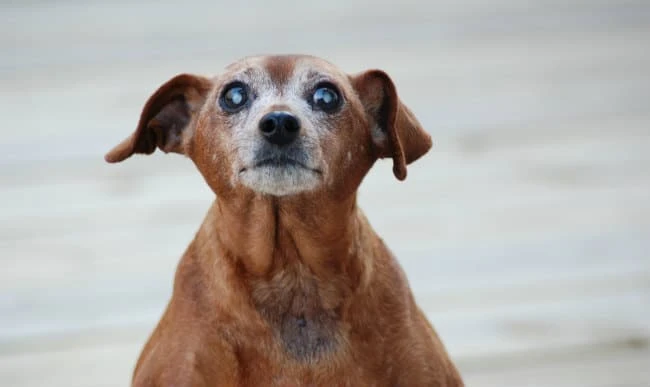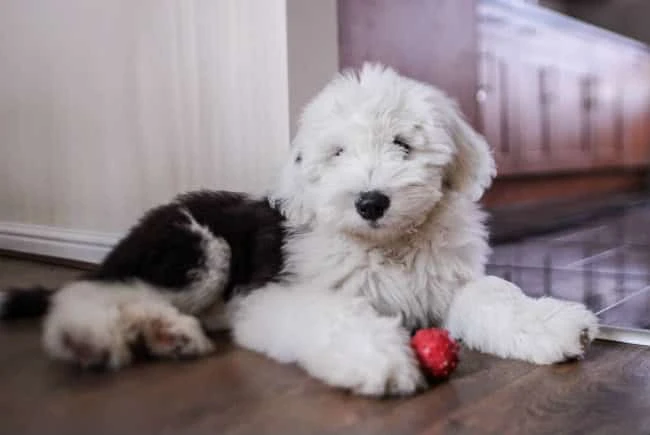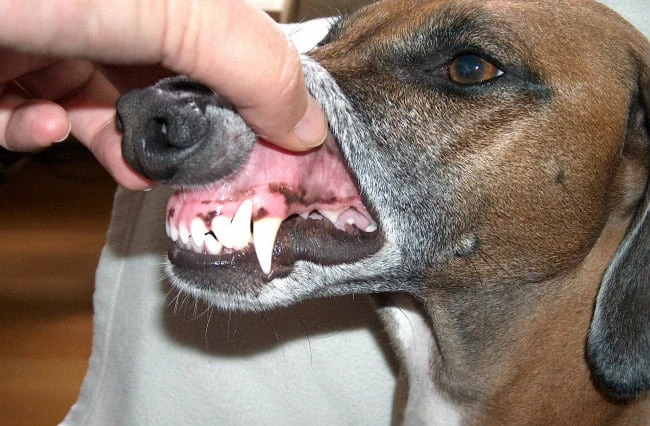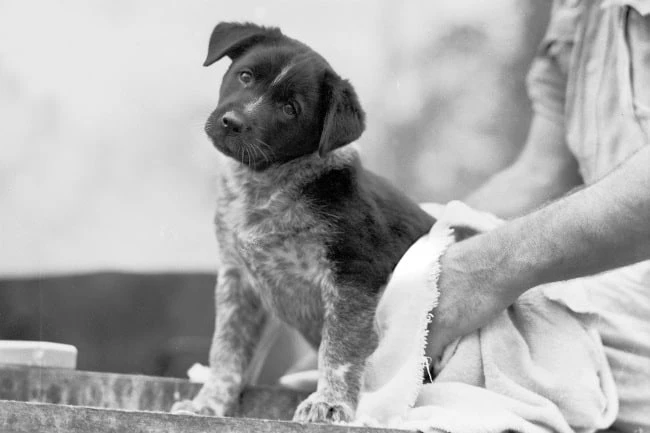Essential Grooming Tips for Older Dogs

As dogs grow older, their grooming needs evolve as well. A good owner must be able to adjust expectations and accommodate an aging dog’s unique needs, but the process doesn’t need to be a complicated one. Taking an older dog to the groomer can be just as rewarding and enjoyable as ever as long as the proper considerations are taken into account, and any grooming professional worth his or her salt will be more than willing to accommodate these changes.
Spread Out the Visit
Many older dogs must deal with joint pain, inflammation, arthritis, muscle soreness, and general fatigue. Because of this, it is important to realize that lengthy grooming sessions can expose a beloved pet to unnecessary pain, discomfort, and stress. One of the easiest ways to solve this problem is to simply schedule multiple, shorter visits rather than a single long one. For instance, schedule a brushing and trimming for one trip, and take care of the shampooing and blow-drying later.
Watch for Signs of Distress
For the most part, an older dog will be able to communicate through body language and behavior if any part of the grooming process is painful or stress-inducing. Keep an eye out for the tell-tale signs, such as barking, shivering, growling, whimpering, and trying to move away from the area. These kinds of behavior indicate that the dog is not comfortable, and a responsible groomer should stop immediately. It may be necessary to reschedule a grooming visit if the dog becomes too frantic or stressed. The most important thing is to keep the animal’s health and safety in mind.
Comfort the Dog
Making an effort to calm down an older dog may be the deciding factor in how well a grooming visit goes. If possible, the owner should stay with the dog to provide a familiar, loving environment. Aging dogs often suffer diminished eyesight and sense of smell, which can easily make them nervous or frightened if they think they are in an unfamiliar situation. For this reason, pets that have been visiting the same groomer for long periods of time are often more at ease during a visit. Talking to the dog in a soothing voice and using affectionate physical contact is a great way for both owners and groomers to relive an older pet’s stress and diffuse any tension.
Understand the Limitations
An older dog may not be able to handle the same grooming regimen that they could in their younger years, and it is crucial to realize that some sacrifices may have to be made for the pet’s sake. Deep-tissue massages and vigorous baths are often discouraged since an aging dog’s skin is thinner and more prone to tearing and bruising. A higher risk of pressure sores and benign fatty tumors means that a dog’s coat may not be able to be clipped as short as usual, and for pets that are blind or have poor eyesight, clipping any hair near the face may be too stressful. Detangling a coat is also generally a poor idea; most groomers should recommend clipping the coat and starting over instead of subjecting the dog to potential pain. Every dog’s needs will be different, and proper communication between the owner and groomer will the best method of determining how to approach those unique needs so that the grooming process will be both comfortable and effective.
At the end of the day, it boils down to understanding that aging dogs will usually require more patience, tenderness, and consideration when being groomed. These tips can go a long way to ensuring that older pets, which have been loving members of their households for many years, will receive the level of care and respect they deserve.
A Detailed Guide to At-Home Dog Grooming
Visits to the groomer can get quite costly, especially when they’re frequent. Professional grooming is a “must” for certain breeds of dog and a “should” for many others, but there are grooming methods you can use in the interim to keep expensive groomer trips to a minimum. Follow these simple at-home grooming instructions to keep your dog healthier and more beautiful, all while keeping more money in your pocket.
Have the Proper Supplies
The first step to grooming at home is having the correct grooming tools for your dog and his coat. You’ll need a wire brush, a comb, nail clippers, styptic powder (or all-purpose flour, cornstarch, or a bar of mild, unscented soap), an ear cleaning solution, cotton balls, pet shampoo and conditioner, scissors, dedicated dog towels, and a hair dryer with a low or no-heat setting.
Learn to Restrain Your Dog
If your dog is squeamish during grooming sessions, you should probably have a second set of hands on board for bathing, trimming, and brushing. Some dogs can be managed by hand, whereas some will need to be washed and groomed on a lead. The level of restraint is ultimately up to you, but a wriggly dog can lead to injury and stress for either one of you. Sometimes it’s best to play it safe.
Trim the Nails
Trim your dog’s nails first, because it’s easier to deal with a panicked-but-dry pup than one who is wet and running in circles around your house. It also means that you’re less likely to get scratched while bathing. This can be an exhausting process if your dog is skittish, in which case you may want to give him a few hours or even a day before you attempt to bathe him.
Pick up your dog’s paws one at a time. Use a gentle pressure on the pad to make the nail pop out slightly. Look for the blood-filled portion of the nail, also called the quick. On a dog with light-colored nails, the quick is easy to identify. On dark colored nails, you may have to make an educated guess. You will want to trim just before the quick to avoid it. If the quick is clipped, it will bleed, but don’t panic–your dog will be just fine as long as you stop the bleeding. Pack the dog’s bleeding nail with a commercial styptic powder or alternative (as mentioned above) and it will coagulate on its own. Continue trimming until all four paws are finished.
Clean the Ears
Before you begin the ear cleaning process, examine your dog’s ears to make sure there is no irritation or sign of infection. If everything looks good, dampen a cotton ball with ear cleaning solution and wipe debris from the skin surrounding the ear canal. Next, drip a small amount of the ear cleaning solution into your dog’s ear, being careful not to flood it. Gently rub your dog’s ear at the base to spread the cleaning solution around. Dogs usually love this part! As long as he doesn’t have any sort of irritation, he will probably lean into your hand as you massage his ear, which is completely normal. Last, use cotton balls to scoop out any debris from the ear canal and blot dry excess fluid.
Pre-Brush Before the Bath
Using a wire brush and a comb, work your way through your dog’s entire coat, including his face, paws, and tail. Obviously, this process will be much more time consuming with a long-haired breed, but it’s equally important for a dog with any coat length: brushing stimulates your dog’s skin, removes dead hair, and encourages circulation. Be gentle when removing mats or tangles. Start on the outskirts of the mat with a wire comb or slicker brush and work your way into the heart of it until it’s completely detangled.
Bathe Meticulously
Run water to a comfortable, warm temperature and dampen your dog’s entire coat, including the head, tail, and underside. You can apply shampoo directly, but many owners and groomers prefer a shampoo dilute that permeates thick coats more thoroughly and can be rinsed out more easily. For this, fill a small bucket (such as a child’s sand pail) with water and shampoo. Whether diluted or full strength, you will need to work the shampoo into the fur and down to the skin. Don’t forget easy-to-miss areas like the fur between the paws or the fleshy spaces between limbs and body. Wash your dog’s face last and rinse it first, covering his eyes during the process. After your dog is thoroughly rinsed, you can apply conditioner in the same manner. Be sure that your dog is completely free of bathing products before turning off the water–these can become extremely itchy as they dry.
Dry as Thoroughly as You Can
It can be difficult to dry a dog at home without a commercial pet dryer, especially if your pooch has a long or thick coat. Use as many towels as necessary to pat the dog dry. For long-coated dogs, avoid circular rubbing motions, as this can create knots. After you’ve absorbed as much water as you can with towels, use a hair dryer on its lowest or no-heat setting to finish drying. This process may take a while, but it is important because water trapped in a dog’s coat can lead to hot spots, itchiness, or other skin maladies.
After-Bath Care
Most short-haired breeds will be fine to go about their doggie day after a bathing and drying session. Breeds with longer or thicker hair, however, need a little extra care. A thorough brushing is in order for breeds with thick fur or undercoats, such as huskies or Shiba Inus. For dogs with longer hair, like golden retrievers or Shi Tzus, you should comb out their locks and trim any pesky ends. Dogs with bangs will need their hair either tied up and out of their eyes, or trimmed to a reasonable length. Be careful when trimming near a dog’s eyes, as a single jerk could lead to a painful injury–and a massive vet bill. You will also want to check the length of the fur between the pads of the toes and trim this down. For trimming paw hair, you can use clippers as a safer alternative to scissors.
Pamper Your Pet While Saving Money
Home grooming isn’t just good for the pocketbook, it’s good for your dog, too. Instead of spending a day in an unfamiliar place with other barking dogs, your pup gets to stay home and bond with you. It may seem like a lot of work at first, but it’s only a few hours’ investment. With home grooming, you can prevent various health issues, have an advantage over parasites like ticks, and spend more quality time with your best furry friend.



